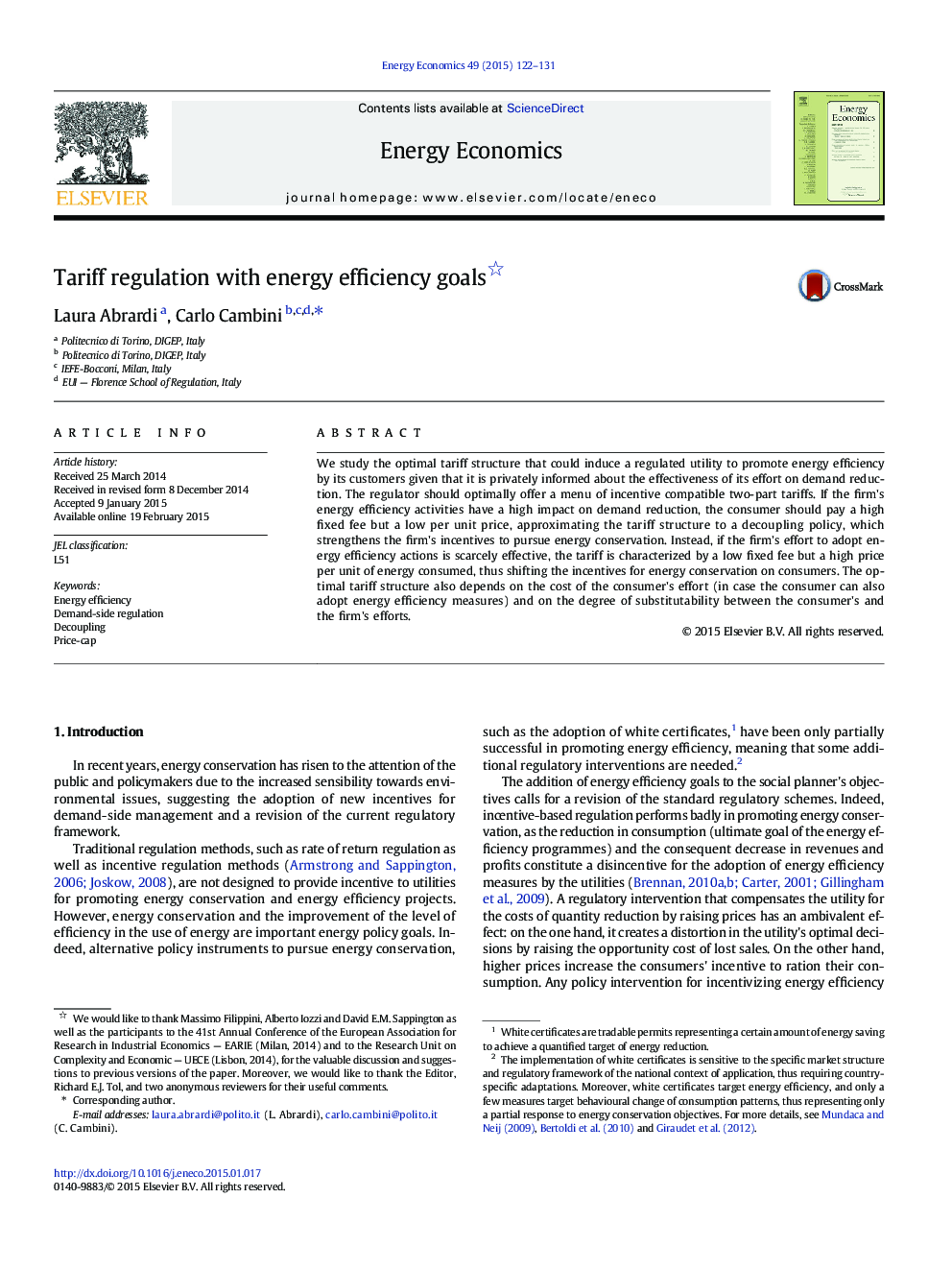| کد مقاله | کد نشریه | سال انتشار | مقاله انگلیسی | نسخه تمام متن |
|---|---|---|---|---|
| 5064473 | 1476714 | 2015 | 10 صفحه PDF | دانلود رایگان |

- We study the optimal tariff structure that induces an utility to adopt energy efficiency activities.
- The regulator optimally offer a menu of incentive compatible two-part tariffs.
- If energy efficiency activities have a high effectiveness, decoupling emerges as a solution.
- If the energy efficiency actions are less effective, the tariff has a higher per unit price and lower fixed fee.
- The optimal tariff structure also depends on the degree of substitutability between the consumer's and the firm's efforts.
We study the optimal tariff structure that could induce a regulated utility to promote energy efficiency by its customers given that it is privately informed about the effectiveness of its effort on demand reduction. The regulator should optimally offer a menu of incentive compatible two-part tariffs. If the firm's energy efficiency activities have a high impact on demand reduction, the consumer should pay a high fixed fee but a low per unit price, approximating the tariff structure to a decoupling policy, which strengthens the firm's incentives to pursue energy conservation. Instead, if the firm's effort to adopt energy efficiency actions is scarcely effective, the tariff is characterized by a low fixed fee but a high price per unit of energy consumed, thus shifting the incentives for energy conservation on consumers. The optimal tariff structure also depends on the cost of the consumer's effort (in case the consumer can also adopt energy efficiency measures) and on the degree of substitutability between the consumer's and the firm's efforts.
Journal: Energy Economics - Volume 49, May 2015, Pages 122-131